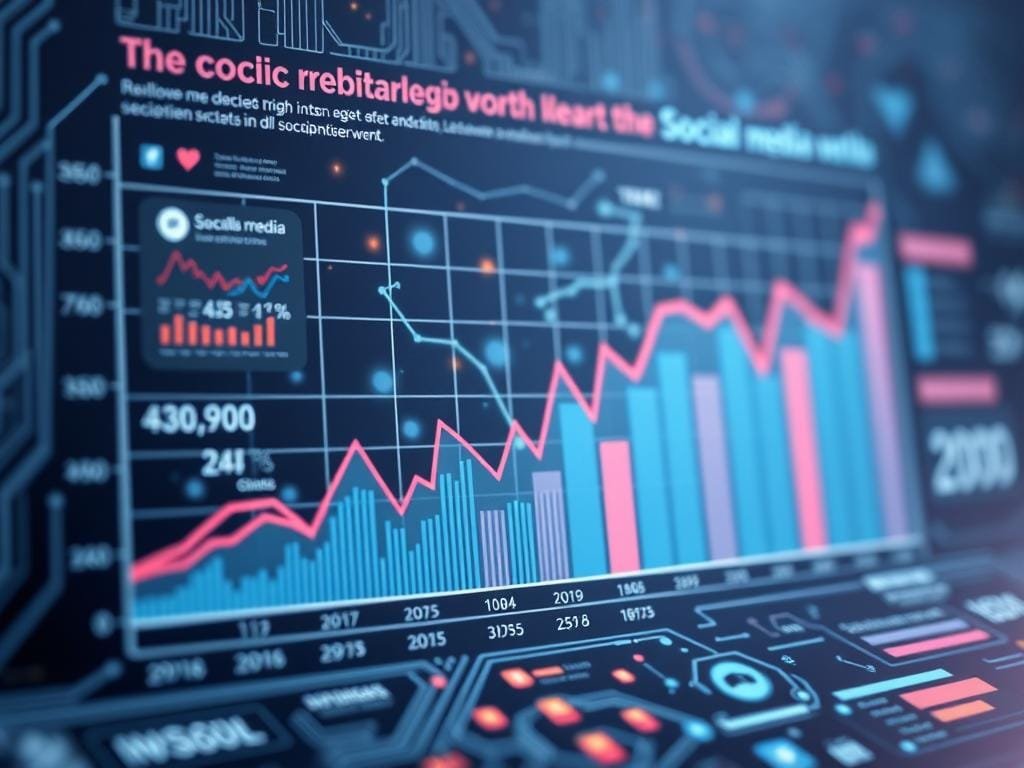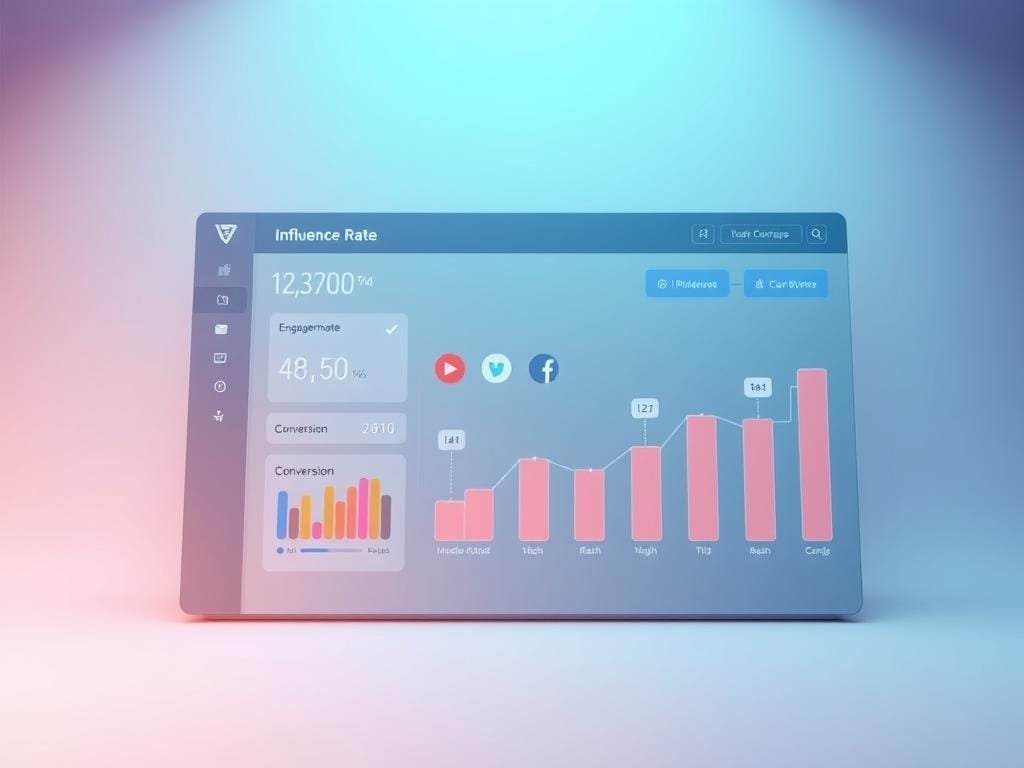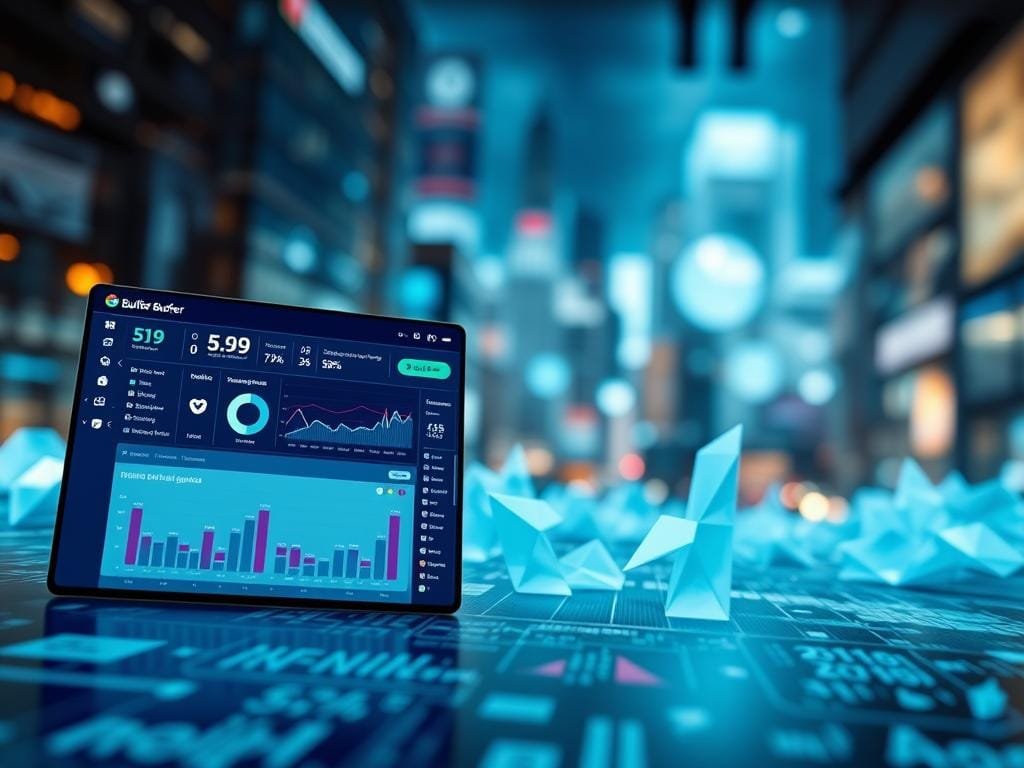Did you know that knowing your online presence is key today? The fast-changing world of social networking means you must stay current. This is true for any business or person wanting to leave a mark.
Buffer’s latest data gives you deep insights into Social Media. It shows you the current state of social media marketing. Use this info to improve how you connect with your audience and grow your online presence. For more on social media analytics, check out these resources.
Key Takeaways
- Understand the current state of social media marketing
- Discover the latest trends and statistics from Buffer
- Learn how to improve your online presence
- Refine your social media strategy for better engagement
- Stay ahead of the curve in the ever-evolving world of social networking
Understanding Social Media Trends
As you explore the world of digital marketing, knowing the latest social media trends is key. Social media platforms are always changing. Keeping up with these changes can greatly affect your online strategy.
The Rise of Visual Content
The digital world is moving towards more visual content. This shift is led by platforms like Instagram and TikTok, where pictures and videos are the main way to communicate.
Visual content is now a vital part of digital marketing plans. Images, infographics, and videos are used to grab attention better than text alone.
The growth of visual content is more than just a trend. It shows how people like to get information online. Studies prove that visual content is more engaging and shared, making it essential for any social media plan.
- Visuals are processed faster by the brain.
- They are more likely to be shared and remembered.
- They can show complex information in a simple way.
Video Marketing’s Impact on Engagement
Video marketing is a strong way to increase engagement on social media. Sites like YouTube, Facebook, and Instagram make it easy for brands to connect with people through videos.
“Video content is king when it comes to social media engagement. It’s not just about being seen; it’s about being remembered and acted upon.”
Some important stats about video marketing include:
- It has higher engagement rates than other content types.
- It helps brands get more remembered and recognized.
- It leads to better conversion rates because of its storytelling power.
Key Social Media Statistics for 2023
In 2023, social media is changing fast. This change brings new chances for brands to connect with people. It’s key for businesses and marketers to keep up.
Platform Usage Among Different Demographics
People use social media in different ways. Younger folks like Instagram and TikTok. Older people often stick with Facebook.
| Demographic | Preferred Platforms | Usage Percentage |
|---|---|---|
| 18-24 years | Instagram, TikTok | 75% |
| 25-44 years | Facebook, Instagram | 60% |
| 45-64 years | 50% |
This shows how important it is to match your social media plan with your audience’s likes.
Growth Rates of Major Platforms
The growth of big social media sites tells us how they’re changing. Facebook is still big, but Instagram and TikTok are growing fast.

- Facebook: 5% annual growth
- Instagram: 10% annual growth
- TikTok: 20% annual growth
These numbers show why businesses need to update their social media plans. They must use the new platforms to stay visible online.
Benefits of Using Buffer for Social Media Management
In today’s digital world, keeping up a steady social media presence is crucial. Tools like Buffer make managing multiple platforms easier. They help you save time and boost engagement.
Buffer boosts your social media strategy by saving you time and improving how people interact with your posts. It lets you manage your social media better, so you can focus on making great content.
Time Efficiency and Scheduling
Buffer’s main perk is scheduling posts in advance. This lets you:
- Plan your content calendar early
- Post consistently on all platforms
- Batch your social media tasks to save time
With scheduled posts, you keep a steady online presence without posting manually at odd hours.
Analyzing Engagement Metrics
Buffer also has analytics tools to see how your content does. These insights help you:
- Track likes, comments, and shares
- Find out what content your audience likes most
- Make your social media strategy better
By looking at these metrics, you can make your social media strategy better. This improves your online presence.
As Buffer says, “Knowing your audience is key to making content they’ll love.” This shows how important analytics are for creating good content.
“The key to a successful social media strategy is understanding your audience and creating content that resonates with them.”
In short, Buffer helps a lot with social media management. It saves time, schedules posts, and analyzes how well your content does. Using these features can make your social media strategy better and keep your online presence strong.
Strategies for Increasing Engagement
To boost social engagement, it’s key to know the strategies that work. Effective engagement helps build a loyal community on social media.
Crafting Compelling Content
Crafting compelling content is at the heart of any successful social media strategy. Content that resonates with your audience gets likes, shares, and comments. To do this, make content that’s relevant, informative, and looks good.
- Use high-quality images and videos to grab attention.
- Write captions that are engaging and include a call-to-action.
- Use storytelling to connect with your audience on an emotional level.
Optimal Posting Times
Finding optimal posting times can really boost your engagement. Look at when your audience is most active and likely to interact with your content.
- Use analytics tools to track your audience’s engagement patterns.
- Try different posting schedules to see what works best for your brand.
- Think about time zones and adjust your posting schedule accordingly.
By using these strategies, you can improve your social media presence and create a more engaged community.
The Role of Analytics in Social Media
In the fast-changing world of social media, analytics are key. They help shape your digital marketing plans. By using data and insights, you can improve how you connect with your audience and meet your marketing targets.

Driving Decisions with Data
Data-driven choices are crucial for a successful social media plan. Analytics give you important info about your audience’s likes, dislikes, and who they are. This lets you make your content and how you interact with people better.
Looking at things like how often people engage with your posts, how many click on links, and how many buy what you’re selling helps you see what’s working. This way, you can make smart changes to get even better results.
Tools for Measuring Success
To see if your social media is doing well, you need the right tools. Analytics platforms have many features, like tracking how people interact with your posts and watching what people say about your brand.
Well-known analytics tools let you really get into the details of how your social media is doing. They give you useful info that helps you make your strategy better. By using these tools, you can keep up with the latest trends and make your digital marketing even stronger.
In the end, analytics in social media give you the power to make a strong and effective plan. By making choices based on data, you can take your digital marketing to new heights and get better results.
Major Changes in Social Media Algorithms
Keeping up with social media changes is key. These updates can change how people see your content on social platforms.
Recently, big changes have hit social media algorithms. For example, updates can make your posts less seen. It’s important to adjust your plan to keep people interested. For tips on handling these updates, check out this guide.
Impact on Content Visibility
Changes in algorithms can affect how visible your content is. For instance, if videos are now more important, you might need to use more videos in your posts.
| Platform | Algorithm Change | Impact on Visibility |
|---|---|---|
| Prioritizing meaningful interactions | Increased visibility for engaging content | |
| Favoring content from close friends | Higher engagement for personal content | |
| Enhancing real-time content | Greater visibility for timely posts |
Adapting to Algorithm Updates
To keep your content seen, you need to know about algorithm changes. You might need to mix up your content or focus on posts that get people talking.
![]()
By understanding and adapting to algorithm changes, you can keep reaching and engaging your audience on social media.
Influencer Marketing Insights
In today’s digital world, teaming up with the right influencers can change the game for your brand. Influencer marketing has grown a lot. It gives brands a special chance to reach their audience through trusted voices.
Finding the Right Influencers
To make the most of influencer marketing, you must find influencers that match your brand and audience. Here are some important things to think about:
- Relevance: Make sure the influencer’s content fits your brand and industry.
- Reach: Check if their following size meets your campaign goals.
- Engagement: Look at how much interaction their content gets, not just the number of followers.

Measuring Influencer Effectiveness
After teaming up with an influencer, it’s key to see how well they work. Key metrics to watch include:
| Metric | Description | Importance |
|---|---|---|
| Engagement Rates | Watch likes, comments, and shares to see how much people interact. | High |
| Reach and Impressions | See how many people have seen the content. | Medium |
| Conversions | Track any direct sales, sign-ups, or other actions from the campaign. | High |
By focusing on these points, you can boost your influencer marketing. This will help grow your brand’s awareness and online presence.
User-Generated Content Strategies
Getting your audience to participate through user-generated content can really help your social media. By using content from your users, you boost engagement and create a community around your brand.
Encouraging Audience Participation
To get your audience involved, try running contests or campaigns. These can encourage users to share content about your brand. For example, ask them to post photos or videos of using your product or service. Using AI writing tools can help make your calls-to-action more engaging.
Also, talk to your audience by replying to their posts and comments. This builds a good relationship and gets more people to join in the conversation.
Showcasing Customer Stories
Sharing customer stories shows the value of your product or service. It builds trust and credibility with others who might be interested.
To share customer stories well, make detailed case studies or post testimonials on social media. This proves your brand’s worth and tells a story that your audience can relate to.
| Strategy | Description | Benefits |
|---|---|---|
| Contests and Campaigns | Incentivize users to share content related to your brand. | Increased engagement, brand visibility. |
| Direct Engagement | Respond to user posts and comments. | Fosters positive relationships, encourages participation. |
| Case Studies and Testimonials | Highlight customer stories and experiences. | Builds trust, provides social proof. |
Paid vs. Organic Reach
Understanding the difference between paid and organic reach on social media is key. Your strategy’s success depends on finding the right mix of both.
Understanding ROI on Paid Campaigns
Paid social media ads can boost your reach and conversions. But, knowing your return on investment (ROI) is vital for success.
To figure out ROI, track costs against revenue. Set clear goals, watch engagement, and tweak your plan as needed.
| Campaign Objective | Key Metrics | ROI Calculation |
|---|---|---|
| Brand Awareness | Impressions, Reach | Compare cost per impression across campaigns |
| Lead Generation | Conversions, Cost per Lead | Evaluate the cost of acquiring a lead against the lead’s potential value |
| Sales | Conversion Rate, Revenue | Assess the revenue generated against the campaign’s cost |
Best Practices for Organic Growth
Paid ads give quick visibility, but organic growth is vital for lasting success. Creating engaging content that connects with your audience is essential for building a loyal following.
Consistency is crucial; posting regularly keeps your audience interested and your brand in mind. Also, engaging with your audience through comments and messages boosts your organic reach.
- Develop a content calendar to ensure consistent posting.
- Use analytics tools to track engagement and adjust your content strategy.
- Encourage audience participation through contests or user-generated content campaigns.
By grasping the benefits of both paid and organic reach, you can craft a solid social media plan that delivers results.
Social Media Crisis Management
In today’s digital world, managing a social media crisis is key. You need to be ready to handle negative feedback and talk clearly to keep your online image strong.
Preparing for Negative Feedback
Negative feedback is bound to happen, but how you respond is what counts. Have a crisis plan ready. This includes watching your social media, knowing how to answer complaints, and training your team for emergencies.
A recent study found that
“64% of consumers say they’ve stopped doing business with a brand due to a single bad experience.”
This shows why it’s vital to act fast when dealing with negative feedback.
| Steps to Prepare | Description |
|---|---|
| Monitor Social Media | Keep track of mentions and conversations about your brand. |
| Establish a Response Protocol | Define how you will respond to negative feedback, including who will respond and when. |
| Train Your Team | Ensure your team understands the protocol and is equipped to handle crisis situations. |
Effective Communication Strategies
Good communication is crucial in a social media crisis. Be open, answer quickly, and use the right tone. Using crisis communication templates can also help.
With a strong plan and effective communication, you can safeguard your brand’s online image. This helps keep your reputation positive.
Privacy Concerns and Social Media
Understanding privacy issues in social media is key. These platforms are vital for your online life but also pose big privacy and security risks.
Data Protection Regulations
It’s important to know the rules about your personal data on social media. Laws like the GDPR in Europe and CCPA in the US aim to protect you. For more on social media privacy, check out this resource.
Building Trust with Transparency
Trust is essential, and being open is key. Share how you handle user data to build trust. Being clear about your data use and following the law is crucial.
AI ethics also play a role as social media uses AI more. To tackle privacy issues, update your privacy policies often. Make sure your data collection is clear and give users control over their data. This way, you follow the rules and earn your audience’s trust.
Future Trends to Watch in Social Media
As you explore the changing world of social media, it’s key to keep up. New technologies are changing how we make, share, and interact with content.
Technological Advancements
Generative AI for making content is growing fast, with 69% of social marketers using AI tools. This trend is likely to grow, especially in areas like government, finance, and healthcare.
Predictions for Digital Marketing
Social listening will keep being important, with 62% of marketers using tools for it. As digital marketing changes, it’s vital to know the latest in social media and adjust your plans.
By knowing these trends, you can improve your social media plan. This way, you can engage more and stay ahead in the digital world.
FAQ
What are the latest social media trends?
The latest trends include more visual content and the power of video marketing. Social media analytics are also becoming more important.
How can I increase engagement on my social media posts?
To boost engagement, create interesting content and post at the right times. Use Buffer’s tools to analyze your posts and improve your strategy.
What are the benefits of using Buffer for social media management?
Buffer saves time and helps schedule posts. It also analyzes engagement, helping you refine your strategy.
How can I measure the success of my influencer marketing campaigns?
Track engagement, reach, and conversions to gauge success. Use this data to improve your influencer partnerships.
What is the importance of user-generated content in social media marketing?
User-generated content boosts audience participation and trust. It also shares customer stories, enhancing your brand’s image.
How can I prepare for a social media crisis?
Have a crisis plan ready, be open, and respond quickly to criticism. Good communication can help manage the situation.
What are the key social media statistics for 2023?
Key stats include who uses each platform and how fast they’re growing. Visual and video content are also on the rise.
How can I optimize my social media strategy using analytics?
Use analytics to track engagement and conversions. This data helps refine your content and ads.
What are the future trends to watch in social media?
Watch for new tech like AI and AR changing content. Video marketing will likely keep growing in importance.
How can I build trust with my audience on social media?
Be open and follow data protection rules. Share customer stories and user-generated content to build trust.
What is the difference between paid and organic reach on social media?
Paid reach comes from ads, while organic reach is from posts without ads. Both are important for different reasons.
